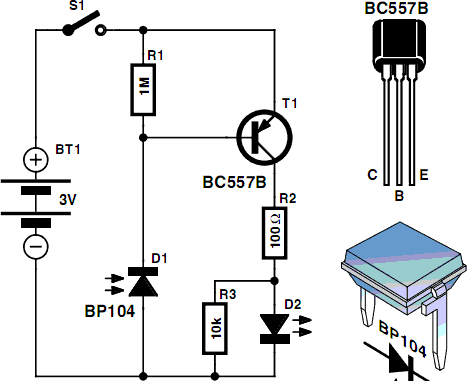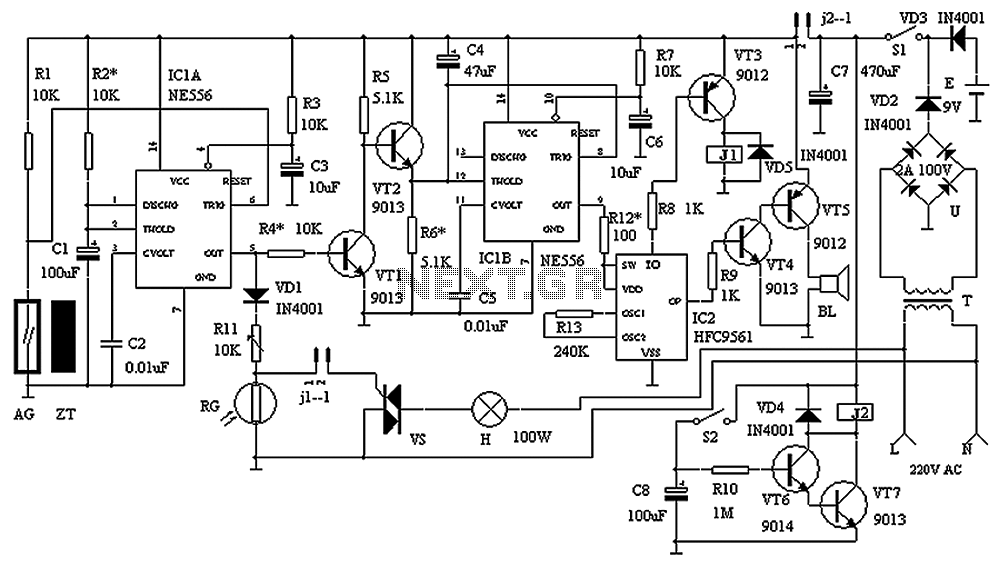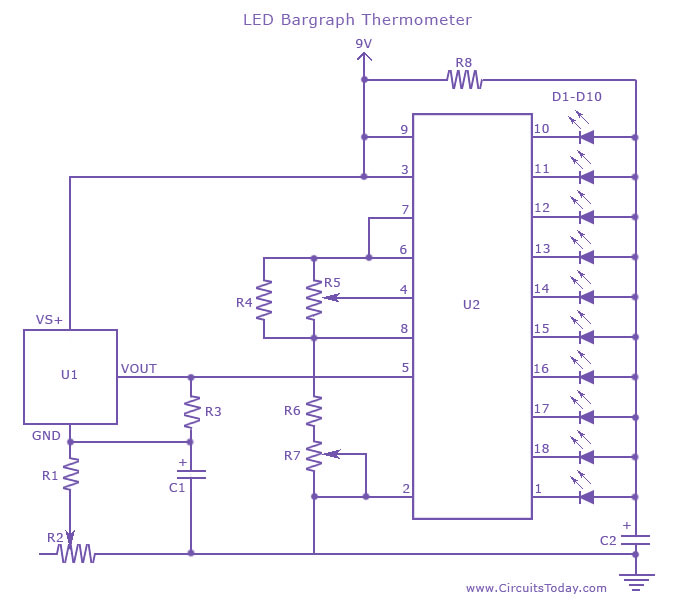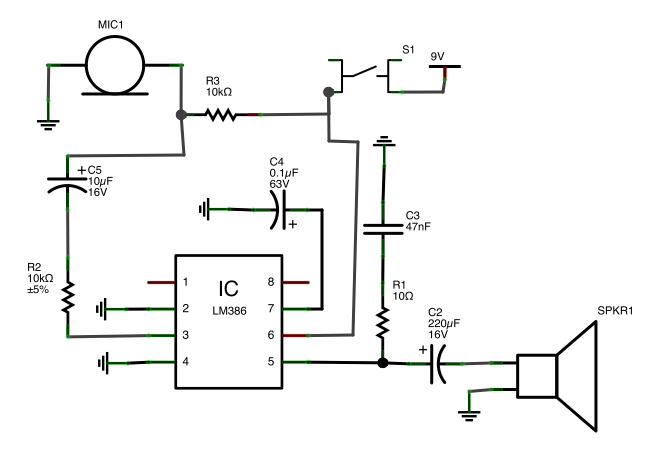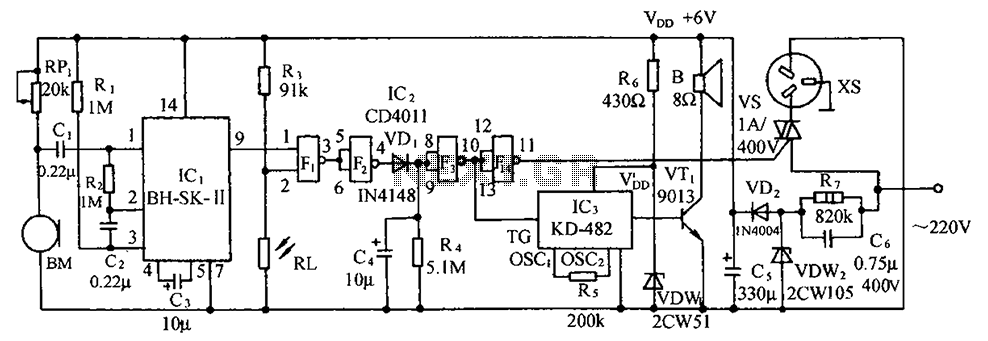
audio Smallest circuit to make a sound
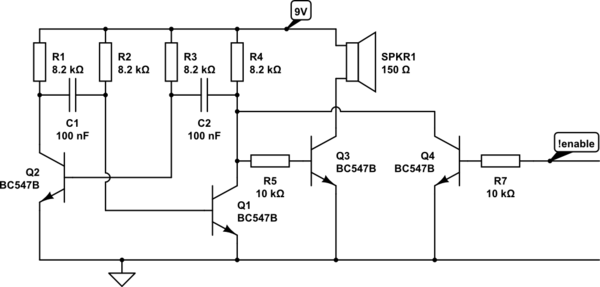
Any ideas? Is this circuit going to be standalone? Is there any other circuitry around it, perhaps a microcontroller? What circuitry does the timing device contain, or does it even contain electronics? Abdullah Kahraman Mar 22, '13 at 18:10. Since you do not want many components, you can maybe remove the pull-down resistor R2 if you can tolerate minor issues, such as a weak and short beep on power-on when the microcontroller's pin is floating. I happened to select a PIC16F616, which is excessive as Olin notes, and I did not pay attention to that. Feel free to use your own microcontroller that you are already utilizing in your design.
The circuit in question appears to involve a microcontroller and a timing device. The design considerations include whether the circuit will function as a standalone unit or integrate with additional circuitry. The timing device may or may not contain electronic components, which could affect the overall functionality and complexity of the circuit.
The mention of a pull-down resistor, specifically R2, suggests that the circuit may include a microcontroller pin that can float when not properly terminated. Removing R2 could simplify the design by reducing the number of components; however, it may introduce minor issues, such as an unintended weak beep upon power-up due to the floating pin state. This is a common scenario in digital circuits where pin states must be clearly defined to avoid unpredictable behavior.
The choice of the PIC16F616 microcontroller indicates a preference for a device with significant capabilities, although it may exceed the requirements of the application. It is advisable to evaluate the specific needs of the project and consider using a microcontroller that aligns more closely with the design specifications and resource requirements.
In summary, the circuit design should carefully consider the integration of the timing device, the role of the microcontroller, and the necessity of components such as pull-down resistors to ensure reliable operation while maintaining simplicity in the design.Any ideas Is this circuit going to be stand alone Any other circuitry around it, perhaps a microcontroller What circuitry does the timing device contain, or does it even contain electronics abdullah kahraman Mar 22 `13 at 18:10 Since you do not want much components, you can maybe remove pull-down resistor R2 if you can get away with small problems, such as a weak and short beep on power-on, when the microcontroller`s pin is floating. I have happened to pick a PIC16F616, it is an over-kill as Olin notes and I did not pay attention to that. Feel free to use your own microcontroller which you are already using in your design. 🔗 External reference
The circuit in question appears to involve a microcontroller and a timing device. The design considerations include whether the circuit will function as a standalone unit or integrate with additional circuitry. The timing device may or may not contain electronic components, which could affect the overall functionality and complexity of the circuit.
The mention of a pull-down resistor, specifically R2, suggests that the circuit may include a microcontroller pin that can float when not properly terminated. Removing R2 could simplify the design by reducing the number of components; however, it may introduce minor issues, such as an unintended weak beep upon power-up due to the floating pin state. This is a common scenario in digital circuits where pin states must be clearly defined to avoid unpredictable behavior.
The choice of the PIC16F616 microcontroller indicates a preference for a device with significant capabilities, although it may exceed the requirements of the application. It is advisable to evaluate the specific needs of the project and consider using a microcontroller that aligns more closely with the design specifications and resource requirements.
In summary, the circuit design should carefully consider the integration of the timing device, the role of the microcontroller, and the necessity of components such as pull-down resistors to ensure reliable operation while maintaining simplicity in the design.Any ideas Is this circuit going to be stand alone Any other circuitry around it, perhaps a microcontroller What circuitry does the timing device contain, or does it even contain electronics abdullah kahraman Mar 22 `13 at 18:10 Since you do not want much components, you can maybe remove pull-down resistor R2 if you can get away with small problems, such as a weak and short beep on power-on, when the microcontroller`s pin is floating. I have happened to pick a PIC16F616, it is an over-kill as Olin notes and I did not pay attention to that. Feel free to use your own microcontroller which you are already using in your design. 🔗 External reference
